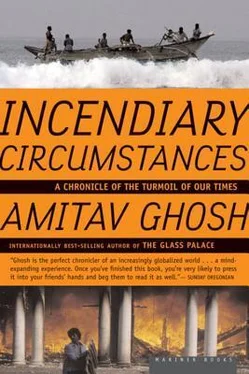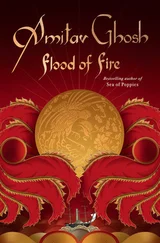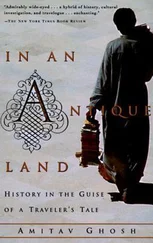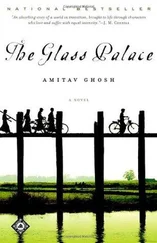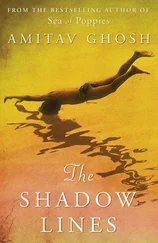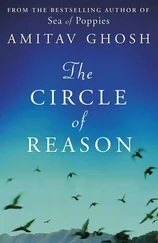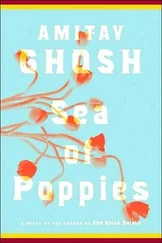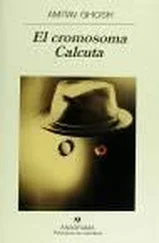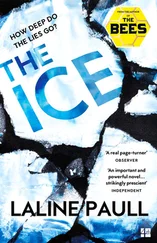How sharply this contrasts with traditions of fiction that predate the novel! It is true, for example, that the city of Baghdad provides a notional location for the Thousand and One Nights. But the Baghdad of Scheherazade is more a talisman, an incantation, than a setting. The stories could happen anywhere so long as our minds have room for an enchanted city.
Or think of that amazing collection of stories known as the Panchatantra or Five Chapters. These stories too have no settings to speak of, except the notion of a forest. Yet the Panchatantra is reckoned by some to be second only to the Bible in the extent of its global diffusion. Compiled in India early in the first millennium, the Panchatantra passed into Arabic through a sixth-century Persian translation, engendering some of the best-known of Middle Eastern fables, including parts of the Thousand and One Nights. The stories were handed on to the Slavic languages through Greek, then from Hebrew to Latin, a version in the latter appearing in 1270. Through Latin they passed into German and Italian. From the Italian version came the famous Elizabethan rendition of Sir Henry North, The Morall Philosophy of Doni (1570). These stories left their mark on collections as different as those of La Fontaine and the Grimm brothers, and today they are inseparably part of a global heritage.
Equally, the stories called the Jafakas, originally compiled in India, came to be diffused throughout southern and eastern Asia and even farther with the spread of Buddhism. The story, both in its epic form and in its shorter version, was vital in the creation of the remarkable cultural authority that India enjoyed in the Asia of the Middle Ages. Not until the advent of Hollywood was narrative again to play so important a part in the diffusion of a civilization.
Everywhere these stories went, they were freely and fluently adapted to local circumstances. Indeed, in a sense the whole point of the stories was their translatability — the dispensable and inessential nature of their locations. What held them together and gave them their appeal was not where they happened but how — the narrative, in other words. Or, to take another example, consider that European narrative tradition which was perhaps the immediate precursor of the novel: the story of Tristan and Isolde. By the late Middle Ages this Celtic narrative, which appears to have had its origins in Cornwall and Brittany, had been translated and adapted into several major European languages. Everywhere it went, the story of Tristan and Isolde was immediately adapted to new locations and new settings. The questions of its origins and its original locations are at best matters of pedantic interest.
In these ways of storytelling, it is the story that gives places their meaning. That is why Homer leaps at us from signs on the New York turnpike, from exits marked Ithaca and Troy; that is why the Ayodhya of the Ramayana lends its name equally to a street in Banaras and a town in Thailand.
This style of fictional narrative is not extinct — far from it. It lives very vividly in the spirit that animates popular cinema in India and many other places. In a Hindi film, as in a kung fu movie, the details that constitute the setting are profoundly unimportant, incidental almost. In Hindi films, the setting of a single song can take us through a number of changes of costume, each in a different location. These films, I need hardly point out, command huge audiences on several continents and may well be the most widely circulated cultural artifacts the world has ever known. When Indonesian streets and villages suddenly empty at four in the afternoon, it is not because of Maxim Gorky or John Steinbeck: it is because of the timing of a daily broadcast of a Hindi film.
Such is the continued vitality of this style of narrative that it eventually succeeded in weaning my uncle from his bookcases. Toward the end of his life, my book-loving uncle abandoned all of his old friends, Gorky and Sholokhov and Hamsun, and became a complete devotee of Bombay films. He would see dozens of Hindi films; sometimes we went together, on lazy afternoons. On the way home he would stop to buy fan magazines. Through much of his life he'd been a forbidding, distant man, an intellectual in the classic, Western sense; in his last years he was utterly transformed, warm, loving, thoughtful. His brothers and sisters scarcely recognized him.
Once, when we were watching a film together, he whispered in my ear that the star, then Bombay's reigning female deity, had recently contracted a severe infestation of lice.
"How do you know?" I asked.
"I read an interview with her hairdresser," he said. "In Stardust. "
This was the man who'd handed me a copy of And Quiet Flows the Don when I was not quite twelve.
My uncle's journey is evidence that matters are not yet decided among different ways of telling stories: that if Literature, led by a flagship called the Novel, has declared victory, the other side, if there is one, has not necessarily conceded defeat. But what exactly is at stake here? What is being contested? Or, to narrow the question, what is the difference between the ways in which place and location are thought of by novelists and by storytellers of other kinds?
The contrast is best seen, I think, where it is most apparent: that is, in situations outside Europe and the Americas, where the novel is a relatively recent import. As an example, I would like to examine for a moment a novel from my own part of the world — Bengal. This novel is called Rajmohun's Wife, written in the early 1860s by the writer Bankim Chandra Chatterjee.
Bankim Chandra Chatterjee was a man of many parts. He was a civil servant, a scholar, a novelist, and a talented polemicist. He was also very widely read, in English as well as Bengali and Sanskrit. In a sense, his was the bookcase that was the ancestor of my uncle's.
Bankim played no small part in the extraordinary efflorescence of Bengali literature in the second half of the nineteenth century. He wrote several major novels in Bengali, all of which were quickly translated into other Indian languages. He was perhaps the first truly "Indian" writer of modern times, in the sense that his literary influence extended throughout the subcontinent. Nirad Chaudhuri describes him as "the creator of Bengali fiction and… the greatest novelist in the Bengali language." Bankim is also widely regarded as one of the intellectual progenitors of Indian nationalism.
Bankim Chandra was nothing if not a pioneer, and he self-consciously set himself the task of bringing the Bengali novel into being by attacking what he called "the Sanskrit school." It is hard today, looking back from a point of time when the novel sails as Literature's flagship, to imagine what it meant to champion such a form in nineteenth-century India. The traditions of fiction that Bankim was seeking to displace were powerful enough to awe its critics into silence. They still are; what modern writer, for example, could ever hope to achieve the success of the Panchatantra? It required true courage to seek to replace this style of narrative with a form so artificial and arbitrary as the novel; the endeavor must have seemed hopeless at the time. Nor did the so-called Sanskrit school lack for defendants. Bankim, and many others who took on the task of domesticating the novel, were immediately derided as monkeylike imitators of the West.
Bankim responded by calling for a full-scale insurrection. Imitation, he wrote, was the law of progress; no civilization was self-contained or self-generated, none could advance without borrowing. He wrote:
Those who are familiar with the present writers in Bengali will readily admit that they all, good and bad alike, may be classed under two heads, the Sanskrit and the English schools. The former represents Sanskrit scholarship and the ancient literature of the country; the latter is the fruit of Western knowledge and ideas. By far the greater number of Bengali writers belong to the Sanskrit school; but by far the greater number of good writers belong to the other… It may be said that there is not at the present day anything like an indigenous school of writers, owing nothing either to Sanskrit writers or to those of Europe.
Читать дальше
